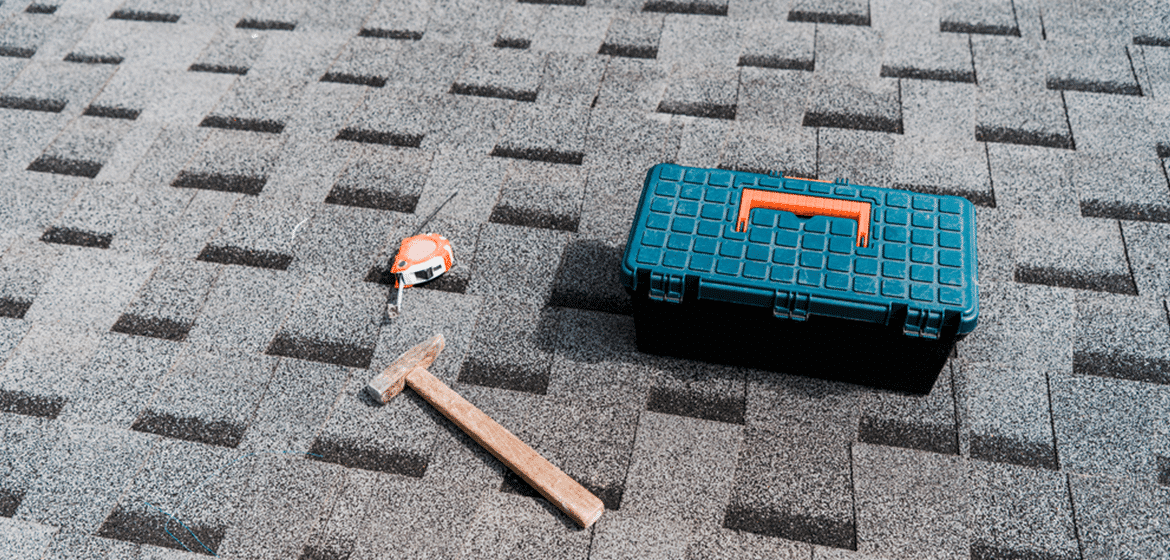
When disaster strikes and you need an emergency roof repair, knowing what steps to take before the professionals arrive can save your home from further damage. Your roof is your first line of defense against the elements, and any delay in addressing issues can lead to significant and costly consequences. Here’s a comprehensive guide on what to do before the roofing experts get to your property.
Assess the Damage Safely
The first step in handling an emergency roof repair is to assess the damage, but safety should always be your top priority. Avoid climbing onto the roof if the conditions are unsafe or if you’re not comfortable doing so. Instead, inspect the roof from the ground with binoculars or a ladder if it’s safe and stable. Look for signs of damage such as missing shingles, large debris, holes, or any areas where the roof appears sagging.
Protect the Interior of Your Home
While waiting for professional help, it’s always crucial to protect the interior of your home from potential water damage. Use buckets to catch leaking water and place tarps or plastic sheets over furniture, electronics, and other valuables. Move any items that could be damaged by water to a safer location. This immediate action can help minimize the extent of the damage inside your home.
Document the Damage
Documenting the damage is essential for insurance purposes. Take clear, detailed photos and videos of the affected areas from multiple angles. Write down any observations about the damage, including the date and time of the incident. This documentation will be useful when filing an insurance claim and help provide a clear picture of the extent of the damage.
Temporary Patching and Tarping
If you can safely access the roof and the weather permits, consider applying temporary patches or tarps to cover the damaged areas. Use roofing cement, tar paper, or waterproof tarps to seal off leaks temporarily. Ensure the tarp is securely fastened to prevent it from being blown away by the wind. This can help prevent additional water from entering your home until a professional can provide a permanent fix.
Clear Debris Carefully
Debris such as tree branches or other objects on the roof can cause additional damage if not removed. If you can safely do so, carefully remove any debris that might exacerbate the damage. Avoid using metal tools that can scratch or further damage the roof’s surface. Instead, use plastic or wooden implements to clear the area.
Notify Your Insurance Company
Contact your insurance company as soon as possible to report the damage and initiate the claims process. Provide them with the documentation you’ve collected, including photos, videos, and written descriptions of the damage. Your insurance company may send an adjuster to assess the damage and determine the coverage for the emergency roof repair.
Avoid DIY Permanent Fixes
While it might be tempting to attempt a permanent fix yourself, it’s generally best to leave major repairs to professionals. DIY repairs can sometimes cause more harm than good, especially if you’re not experienced with roofing. Temporary measures are usually sufficient to stabilize the situation until expert help arrives.
Understand Common Types of Emergency Roof Damage
Different types of emergencies can cause damage to your roof. Understanding the nature of the damage can help you take appropriate action:
- Water Damage: Heavy rains, hurricanes, and accumulated snow can lead to leaks, causing significant damage to your roof and home. Look for water stains on your ceilings or walls as a sign of water intrusion. Water damage can weaken the structural integrity of your roof and lead to mold growth if not addressed promptly.
- Fire Damage: Even fire-resistant roofing materials can be compromised by a severe fire. Look for burnt or charred materials on the roof. Fire damage can affect the roof’s structural components, making it unsafe and requiring immediate professional attention.
- Wind or Storm Damage: High winds can tear off shingles or cause trees to fall onto your roof. Look for missing shingles or visible gaps. Storm damage often results in exposed underlayment or roof decking, making your home vulnerable to water infiltration.
- Tree Damage: Fallen trees or large branches can puncture your roof, causing immediate and severe damage. Inspect for any obvious punctures or depressions. Tree damage often requires emergency repairs to prevent further structural issues and water damage.
- Mold: Poor ventilation can lead to mold growth in the attic, compromising your roof’s health and your home’s air quality. Look for discolored or damp spots. Mold can spread rapidly, so it’s crucial to address ventilation issues and mold growth promptly.
- Ice Dams: These can form when snow melts and refreezes at the roof’s edge, causing water to back up under the shingles. Look for ice buildup along the eaves. Ice dams can lead to water damage and leaks, affecting your roof and your home’s interior.
Understanding these common types of emergency roof damage can help you take swift and appropriate action to mitigate damage and protect your home. Regular maintenance and inspections can prevent many of these issues, ensuring your roof remains in good condition.
Prevent Future Emergencies with Regular Maintenance
Prevention is always better than cure. Regular maintenance can help identify and fix minor issues before they become emergencies. Schedule regular roof inspections, especially after severe weather. Clear your gutters of debris to prevent water backup, and trim overhanging tree branches to minimize the risk of them falling on your roof.
Know When to Call the Professionals
Some situations require immediate professional intervention. If you’re dealing with significant damage such as a large hole, extensive water leaks, or structural damage, call a roofing professional immediately. In the Dallas-Fort Worth area, you can rely on a trusted residential roofing company in Dallas, TX to provide prompt and efficient emergency roof repair services.
Tips to Avoid Emergency Roof Repairs
While some emergencies are unavoidable, regular roof maintenance can prevent many common issues:
- Keep Gutters Clear: Clean gutters are essential for proper drainage. Clogged gutters can lead to water backup, which can damage the roof and cause leaks. Ensure your gutters are debris-free by cleaning them at least twice a year, especially in the spring and fall.
- Regular Inspections: Conducting annual roof inspections can help catch small issues before they escalate into major problems. A professional roofer can identify and fix potential weak spots, loose shingles, and other minor damages that could lead to emergency repairs if left unattended.
- Tree Trimming: Overhanging branches can pose a significant threat to your roof during storms. Regularly trim trees near your house to prevent branches from breaking off and causing damage.
- Replace Damaged Shingles: Promptly replacing damaged or missing shingles is crucial for maintaining your roof’s integrity. Damaged shingles can expose the underlying structure to the elements, leading to leaks and further deterioration.
Implementing these proactive measures can significantly reduce the risk of needing emergency roof repairs, saving you time and money in the long run.
Handling an emergency roof repair requires quick thinking and careful action to protect your home and minimize damage. By following these steps and understanding the nature of different types of roof damage, you can effectively manage the situation until professional help arrives. Regular maintenance and prompt action can also help prevent future emergencies.
At Dane Roofing, LLC, we understand the urgency of roof emergencies and are dedicated to providing the highest quality service. Whether you need residential or commercial roofing solutions, our experienced team is here to assist. From repairs to full roof replacements, Dane Roofing, LLC handles it all with expertise and care.
Contact us today for any of your roofing needs, and let Dane Roofing, LLC helps you protect your home or business with top-notch craftsmanship and reliable service. Your satisfaction and safety are our top priorities.

